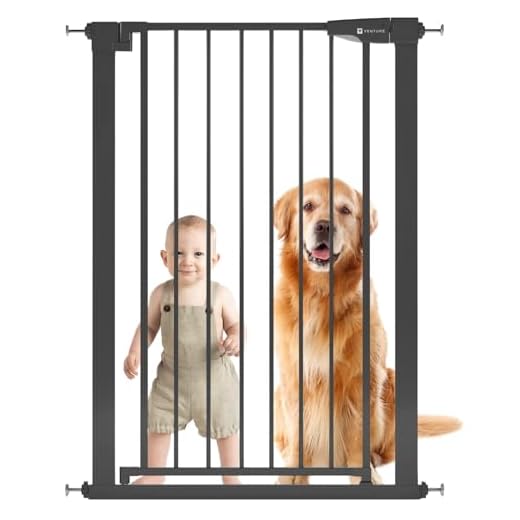




Consistent reinforcement of positive behaviours is key. Instead of scolding, reward your furry friend for remaining calm around felines. Use treats or praise when they ignore the cat, gradually building a stronger association between good behaviour and rewards.
Redirect attention with engaging activities. Keeping your companion mentally and physically stimulated can significantly reduce their impulse to chase. Regular walks, interactive toys, and playtime can redirect their focus away from the feline. Consider incorporating obedience exercises that require focus and discipline.
Establish clear boundaries. Ensure your canine understands where it is acceptable to roam. Use barriers or gates to separate the two animals when unsupervised. This separation helps to diminish the excitement and interest in the cat, ultimately facilitating a more peaceful coexistence.
Socialisation plays a critical role in shaping behaviour. Gradually expose your four-legged friend to cats in controlled environments. Start with a calm cat and allow your companion to observe from a distance. Over time, decrease the distance while ensuring the experience remains positive for both animals.
Consistency in commands and expectations is vital. Use specific phrases to signal appropriate behaviour when encountering a cat. Reinforce these commands during interactions and practice regularly to help your canine associate the commands with desired actions.
Techniques to Dissuade Your Canine from Chasing Felines
Begin with a firm command like “Leave it” or “Stay” when your furry companion shows interest in a feline. Consistency is key; repeat this command every time the situation arises. Use treats as positive reinforcement when your pet complies. This builds a connection between the command and a reward, making it more likely they will listen in the future.
Another effective method is to create distractions. When out for walks, redirect their attention with toys or engaging activities whenever a cat is nearby. This helps them associate the presence of a feline with fun and excitement rather than a chase.
Socialisation plays a significant role. Arrange controlled meetings with calm, friendly cats. Supervised interactions can help your companion learn to coexist peacefully with felines, reducing their instinct to chase. Always supervise these meetings to ensure a safe environment.
Physical exercise is essential for releasing excess energy. A well-exercised companion is less likely to engage in unwanted behaviour. Incorporate regular walks, play sessions, and mental stimulation activities to keep your pet happy and focused. Additionally, consider discussing the best food to feed your dog after giving birth to support their overall health and energy levels.
Lastly, patience is vital. Changing behaviour takes time, so celebrate small victories along the way. With dedication and the right techniques, a peaceful coexistence between your canine and local felines is achievable!
Understanding Your Canine’s Instincts and Behaviour
Recognising the natural tendencies of your companion is key to addressing their instincts towards smaller animals. These behaviours are rooted in genetics and past experiences.
- Prey Drive: Many breeds possess a strong urge to chase moving objects. This is an inherent trait, especially in herding and hunting breeds. Knowing this can help you redirect that energy.
- Socialisation: Early interactions with various animals can influence a pet’s behaviour. Exposing your furry friend to cats in a controlled manner can reduce their inclination to chase.
- Body Language: Observing signals of excitement or agitation can provide insights. A stiff tail or intense focus indicates a rising prey drive. Recognising these signs allows for timely interventions.
Implementing strategies to manage these instincts is essential. Here are a few practical steps:
- Utilise distractions during walks, like toys or treats, to shift their focus.
- Practice commands that promote calmness, reinforcing positive behaviour when they see a feline.
- Establish boundaries in your home, creating safe spaces for both your pet and the smaller animals.
Consistency in approach is vital. Regular reinforcement of desired behaviours will help in gradually reshaping their instinctual responses.
Creating a Safe Space for Both Pets
Establish distinct areas where each animal can retreat and feel secure. This separation reduces stress and promotes harmony. For instance, I set up a cosy corner for my feline companion, complete with a soft bed and her favourite toys, away from the curious sniffs of my canine friend. Meanwhile, I created a dedicated space for my pup with a comfortable crate and chew toys. This way, they both have their own territory.
Physical Barriers
Installing baby gates or pet doors can help manage interactions. My experience has shown that these barriers allow my pets to see each other without direct contact, which aids in gradual acclimatisation. I recommend starting with the gate closed, allowing them to observe one another. Over time, you can open the gate for supervised visits.
Supervised Interactions
Whenever they are together, I keep a close eye on their behaviour. Using a leash on the canine during initial encounters can prevent any sudden lunges. Offering treats for calm behaviour reinforces positive associations. I noticed that rewarding my pup for ignoring the cat led to more relaxed interactions over time.
| Action | Benefit |
|---|---|
| Designated Spaces | Reduces stress for both animals |
| Physical Barriers | Allows safe observation |
| Supervised Visits | Encourages positive behaviour |
| Reward System | Reinforces calmness and patience |
Over time, I’ve seen my pets grow more comfortable with one another. With patience and consistency, they can coexist peacefully, enjoying their own spaces while learning to appreciate each other’s presence.
Implementing Basic Obedience Training Techniques
Begin with establishing a strong recall command. Use a high-value treat or toy to encourage your pet to come to you when called, regardless of distractions around, including smaller animals. Consistency is key; practise this in various environments to reinforce reliability.
Positive Reinforcement
Incorporate positive reinforcement methods. Whenever your furry companion displays calm behaviour in the presence of felines, reward them immediately. This could be treats, praise, or playtime. The goal is to create a positive association with the presence of cats.
- Choose a quiet location initially, introducing the feline gradually.
- Observe reactions and reward calm behaviour instantly.
- Gradually increase exposure time as your pet becomes more comfortable.
Impulse Control Exercises
Engage in impulse control exercises such as ‘leave it’ or ‘stay’. These commands teach your pet to resist the urge to chase or react impulsively to moving objects, including cats. Start with low-stakes distractions before gradually increasing the difficulty.
- Begin with an item of lesser interest, instructing to ‘leave it’.
- Once successful, incorporate a toy resembling a cat’s movements.
- Progress to real-life situations with supervision.
Incorporating these techniques into daily routines can significantly enhance your pet’s behaviour around felines. Regular practice and patience will yield lasting results, making life more harmonious for all pets involved.
Using Positive Reinforcement to Modify Behaviour
To effectively redirect your canine’s attention away from felines, start by rewarding calm behaviour. Each time your pet remains composed in the presence of a cat, offer a treat or praise. This creates a strong association between the cat’s presence and positive experiences, reinforcing desired behaviour.
Establishing a Reward System
Consistency is key. Set up a system where your companion earns rewards for ignoring or calmly observing a cat from a distance. Gradually decrease the distance between the two as your pet becomes more comfortable. This method builds confidence while minimising the urge to chase.
Incorporating Play and Distractions
Engaging your four-legged friend in interactive games or training sessions can channel their energy. Use toys or activities that capture their attention, especially when a cat is nearby. This not only distracts but also strengthens your bond, making your pet less inclined to pursue the feline.
Introducing Controlled Interactions Between Canine and Feline
Begin with short, supervised meetings. Use a leash for the pup, ensuring control over their movements. Keep the kitty in a safe space, like a separate room or on a high perch, where they feel secure. Gradually allow the pooch to observe without direct engagement. This sets a non-threatening environment. Reward calm behaviour with treats or praise.
Creating Positive Associations
During these encounters, offer the beloved feline treats or toys to create a positive experience. If the canine remains calm and collected, reinforce this behaviour with rewards. Over time, the two can get used to each other’s presence, reducing any inclination for chasing. Aim for multiple short sessions rather than prolonged interactions, as this helps avoid overwhelming either companion.
Read Body Language
Stay attentive to the signals both animals give. If the feline shows signs of stress–like hissing or hiding–immediately remove the pup from the situation. Likewise, if the canine gets overly excited or fixated, redirect their attention with commands they know well. Understanding their cues enhances safety during these interactions.
Monitoring Progress and Making Adjustments
Keep an eye on behaviours during training sessions and daily interactions. If your furry friend shows signs of excitement or curiosity towards felines, pause the activity. Redirect their attention to a toy or command they know well. This redirection helps reinforce focused behaviour.
Documenting Observations
Maintain a log of each session, noting specific reactions and responses. For instance, if your pooch remains calm around a cat, reward them immediately. If they act out, jot down what triggered the response. This documentation provides insights into patterns and helps tailor your approach.
Adapting Techniques
Be flexible with your methods. If positive reinforcement isn’t yielding results, consider adjusting the rewards. Some pets respond better to praise, while others might prefer treats or playtime. Experiment with different stimuli until you find the perfect motivator. Regularly reassess the training environment as well–eliminate distractions to enhance focus during sessions.
FAQ:
What are some effective methods to train a dog not to chase cats?
Training a dog not to chase cats involves several techniques. One common method is to use positive reinforcement. Reward your dog with treats or praise when they show calm behaviour around cats. Additionally, teaching commands such as “leave it” or “stay” can help manage their impulses. Consistency in training sessions is key, along with gradually introducing the dog to cats in a controlled environment to help them learn to coexist peacefully.
How long does it typically take to train a dog to stop chasing cats?
The time it takes to train a dog to stop chasing cats can vary greatly depending on the dog’s temperament, age, and prior experiences. Some dogs may learn quickly within a few weeks, while others might take several months to fully adjust. Regular training sessions and patience are important, as well as ensuring that the dog is exposed to cats in a safe and controlled manner. Consistent reinforcement of positive behaviours will help speed up the process.
Can certain dog breeds be more prone to chasing cats? If so, which ones?
Yes, some dog breeds have a natural instinct to chase smaller animals, including cats. Breeds such as Greyhounds, Terriers, and some herding dogs often have a higher prey drive, making them more likely to pursue cats. However, this does not mean that all dogs of these breeds will chase cats; individual personalities and training play significant roles. It’s crucial for owners of such breeds to be proactive in training and socialisation to help mitigate this behaviour.
What should I do if my dog has already chased a cat and is aggressive towards them?
If your dog has shown aggressive behaviour towards a cat, it is important to address this issue promptly. Start by ensuring the safety of both the dog and the cat by keeping them separated. Consult with a professional dog trainer or behaviourist who can assess the situation and provide tailored strategies. Gradually reintroducing the dog to the cat in a controlled manner, using commands and rewards for calm behaviour, can help in desensitising the dog to the presence of cats. Training should be consistent, and it’s essential to remain calm and patient during the process.









